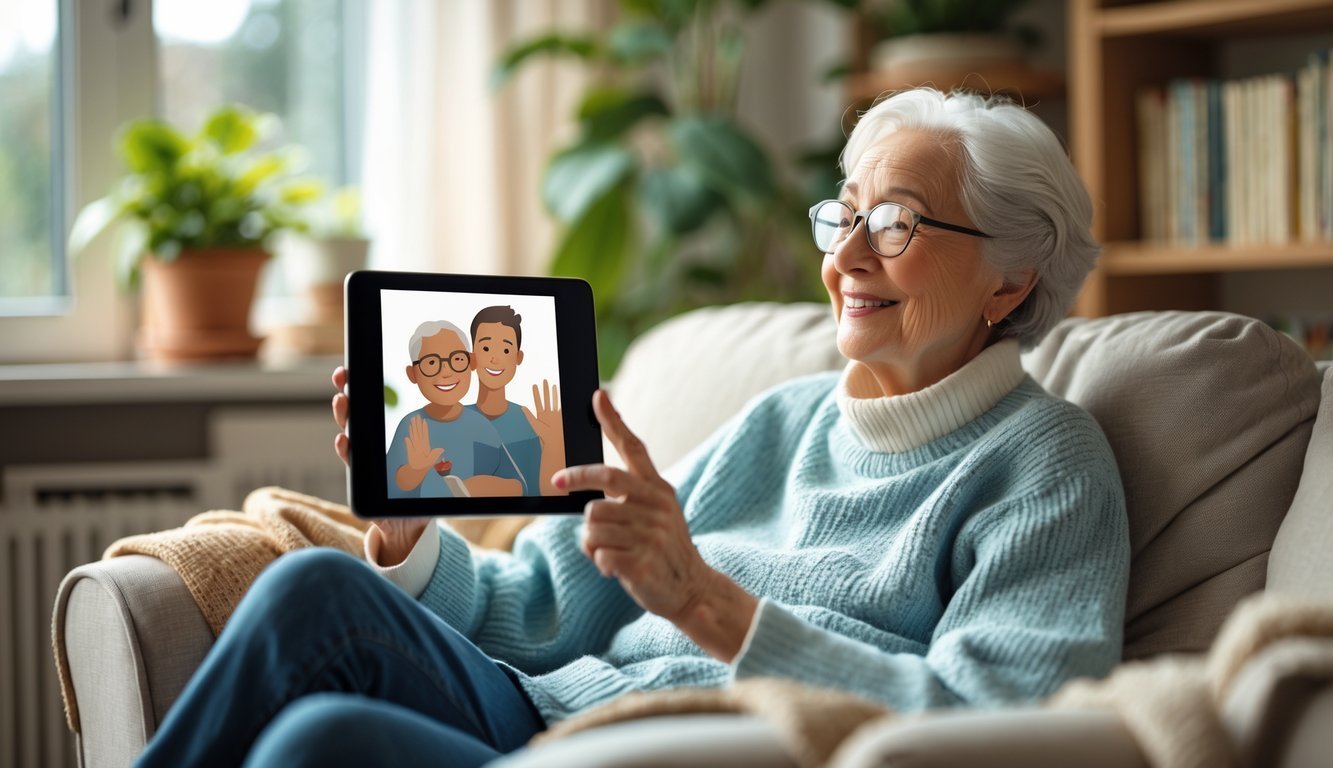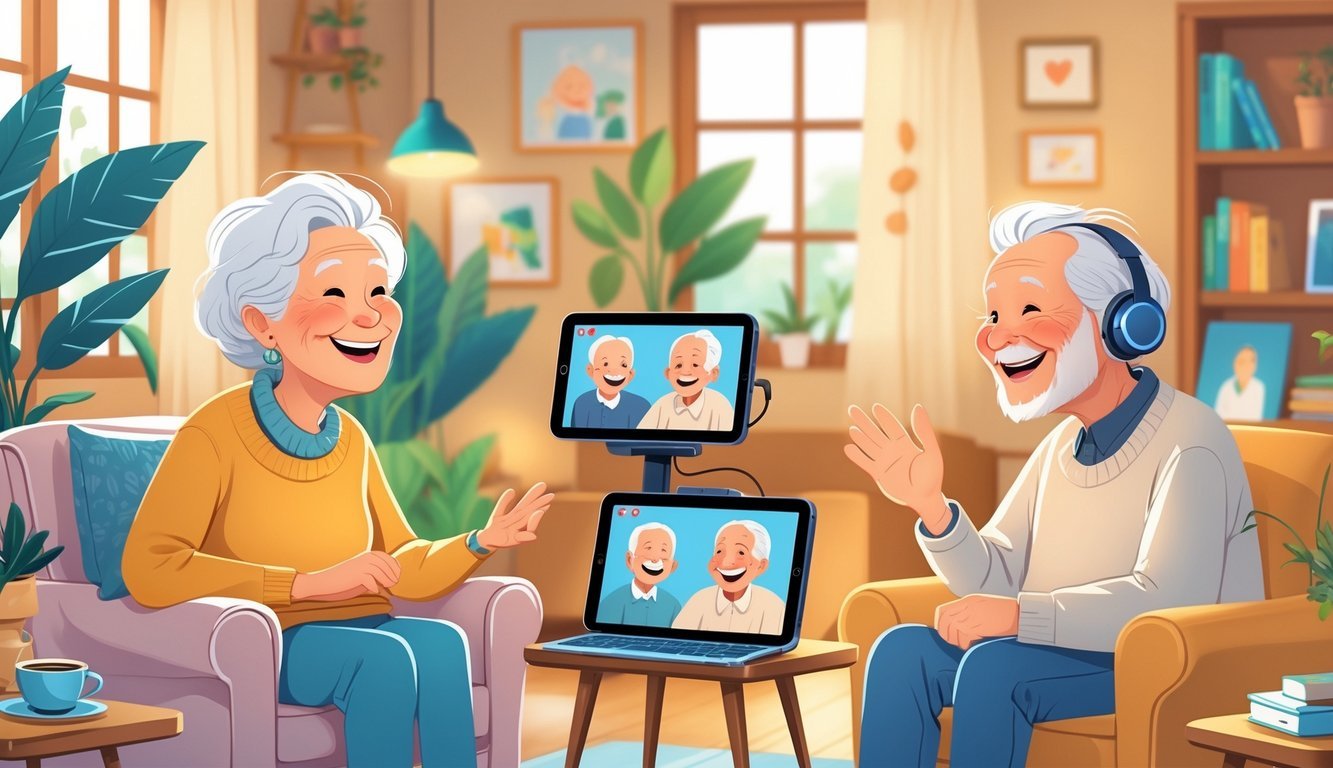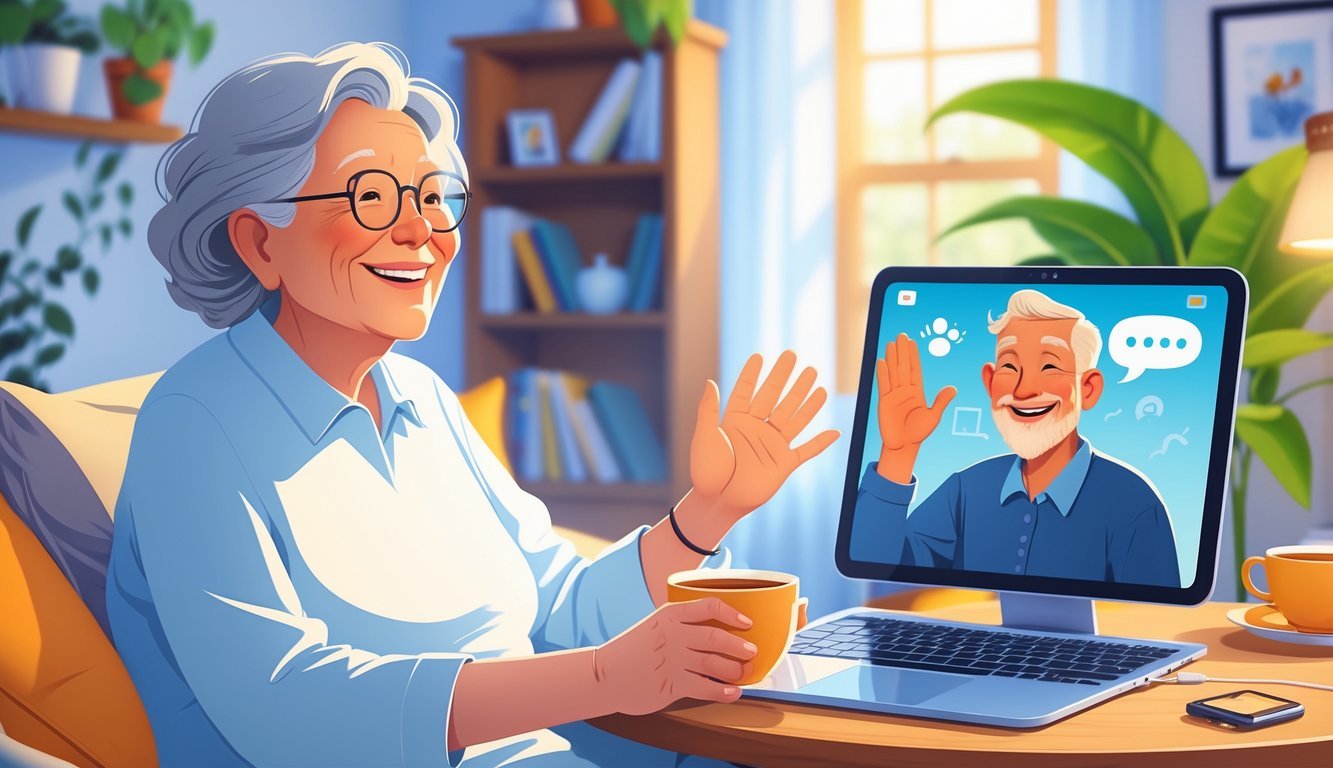PsychNewsDaily Publishers
100 Summit Drive
Burlington, MA, 01803
Telephone: (320) 349-2484
PsychNewsDaily Publishers
100 Summit Drive
Burlington, MA, 01803
Telephone: (320) 349-2484
Video calls significantly reduce loneliness for seniors, enhance emotional well-being, and strengthen family relationships through user-friendly devices and apps designed for easy connectivity.

Spending time with loved ones matters, especially as we grow older. Video calls make it possible for elderly people to stay in touch with family and friends, even when meeting in person isn’t an option.
Simple video call devices can really reduce loneliness and make chatting more enjoyable and comforting for seniors.
Technology can seem intimidating at first, can’t it? Thankfully, a lot of tools are made just for seniors, with easy screens and clear features.
These devices let you or your loved ones see smiles, hear voices, and share moments. That helps keep relationships alive, even from a distance.
With the right tools, staying connected through video calls becomes a meaningful way to support emotional well-being. Just making the effort to reach out can really brighten someone’s day.

Video calls help you or your elderly loved ones stay connected in lots of important ways. They can make a real difference in fighting loneliness, improving mood, and keeping family ties strong.
Video calls let you see and talk to others, even when meeting in person isn’t possible. For seniors, this face-to-face contact can help them feel less alone and more included.
When you use video calls, you can share thoughts and feelings right away. This connection helps fight social isolation, which often affects older adults who live far from loved ones.
Just a short chat can lift spirits and bring comfort.
Video calls give you chances to stay socially active. Seniors who use video chats often feel less stressed and more balanced emotionally.
These calls keep your mind busy and can help lower feelings of depression.
Interacting with others also encourages conversations and brings up memories. Staying mentally engaged matters for overall wellbeing and can even slow some mental decline.
Video calls can make daily life brighter by making socializing easier. You can join group chats, family celebrations, or just have a casual talk.
This kind of contact lets seniors stay involved in family events, hobbies, or community activities—even from home. It supports independence because you don’t always need to travel or have visitors.
Video calls help you stay close to the things that matter.
Video calls make it simple to keep in touch with elderly loved ones. Seeing familiar faces and hearing voices can strengthen bonds.
You can share special moments, updates, and daily details that build trust and closeness. Ongoing contact keeps relationships strong and helps seniors feel cared for and safer at home.

Keeping your elderly loved ones connected through video calls means picking the right devices, using easy apps, and making sure every call feels safe and private.
You want tools that fit their needs, protect their information, and help everyone enjoy regular, low-stress conversations.
When you pick a device for video calls, look for simple screens with big buttons or touch areas. Devices like the Amazon Echo Show or GrandPad are made for seniors.
They often include voice assistants, so your loved one can start a call just by talking.
Smart devices for seniors usually have easy setups and fewer confusing options. That helps cut down on frustration and keeps calls focused on connection.
Devices with built-in video calling apps save time, so family caregivers or residents in senior living communities can connect without tech headaches.
Apps like Zoom, Skype, FaceTime, and the Alexa app on Amazon Echo Show are popular picks for video chats with seniors. They’re free or low-cost and work on computers, tablets, and phones.
Choose apps that are easy to use and work on devices your loved one already has. FaceTime is ideal for Apple users, while Zoom and Skype work on most platforms.
Some apps allow group calls, which is perfect for family get-togethers.
Look for features like one-click joining and big, clear buttons. These help seniors avoid getting stuck with settings or passwords and keep conversations flowing.
Safety matters when video calling elderly family. Use devices and apps that protect personal info with passwords and secure connections.
Don’t share call links publicly to keep strangers out.
Remind your loved ones not to share sensitive information during calls, especially if they use devices connected to artificial intelligence or cloud services.
Some devices can block unknown callers automatically, which adds extra privacy.
In senior care or care homes like Brookdale Senior Living, staff should help set up secure settings so residents can stay connected without privacy worries. That way, everyone feels safer while keeping in touch.

You can find devices made to be easy for seniors, with clear screens and simple buttons. Setting up a video call system at home doesn’t have to be hard, even for those with memory challenges.
There are also services and tips to help make video calls feel more natural and comfortable for elderly loved ones.
Many seniors like Facebook Portal and Amazon Echo Show. These devices have big screens, clear audio, and simple touch or voice controls.
Some even make calls simple with just one button or automatic answering.
Pick a device with a touchscreen or voice commands for easy use. Keep it in one spot, like the living room or kitchen.
Show your loved one how to answer calls and practice calling a few times.
Choose devices with simple, clear buttons or automatic answering. Large screens and loud speakers help a lot.
Skip devices with too many menus or confusing settings.
Some nonprofits and community groups offer free video call sessions to help with loneliness. Check local senior centers or online platforms that connect volunteers with seniors.
These services usually work on popular video call apps.
Using a device with one-touch calling or voice commands is the easiest. You can set up favorites so calls connect right away.
Some apps even start calls automatically when a family member calls first.
These days, devices usually come with bigger fonts. The screens look clearer, and the volume goes up higher, which definitely helps.
A lot of them let you use your voice to control things—handy if touchscreens feel tricky. Some systems just skip the confusing menus altogether and stick to what matters: making calls.